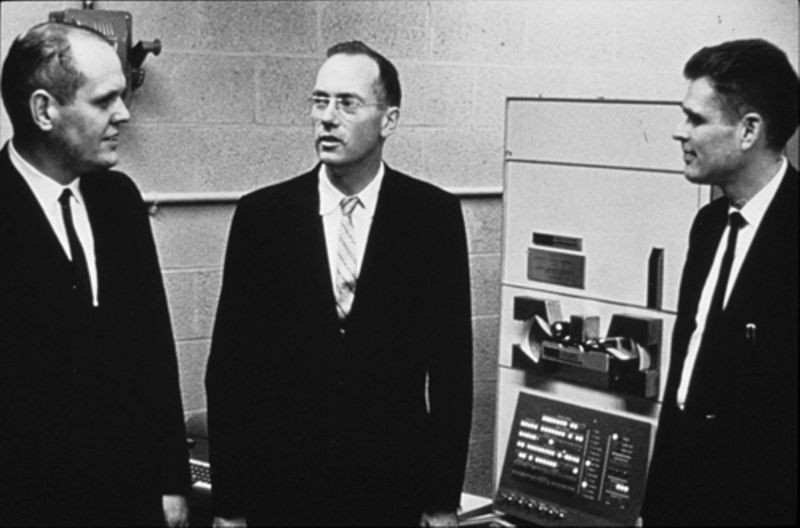Ken Olsen

We had a dream of interactive computing. Normal computing was considered big, expensive, awesome, beyond ordinary people. Interactive computing was exciting and fun, and people could interact directly with the computer. Ken Olsen
Born: February 20, 1926, Stratford, Connecticut
In his youth, Ken Olsen worked summers in a machine shop and fixed radios in his basement. After serving in the Navy between 1944 and 1946, he attended MIT and then worked at MIT Lincoln Laboratory where he developed the Memory Test Computer and designed some of the hardware on the TX-0 and TX-2 machines, early transistor-based large-scale mainframe computers.
In 1957, Olsen, along with Harlan Anderson left MIT Lincoln Laboratory to form Digital Equipment Corporation (DEC) with a $70,000 investment from General Georges F. Doriot at the American Research and Development Corporation, a venture capital firm.
DEC first began producing printed circuit logic modules used by engineers to test electronic equipment. Olsen quickly realized that many of the functions being performed by mainframes could be done by smaller computers, and set out to produce them. Based on their logic modules, the company developed the world's first small interactive computer, the Programmed Data Processor (PDP-1) in 1960.
Under Olsen’s leadership, DEC at its peak was the second largest computer company in the world.
Olsen holds B.S. (1950) and M.S. (1952) degrees from MIT.



.1957-1978.lg.jpg)












